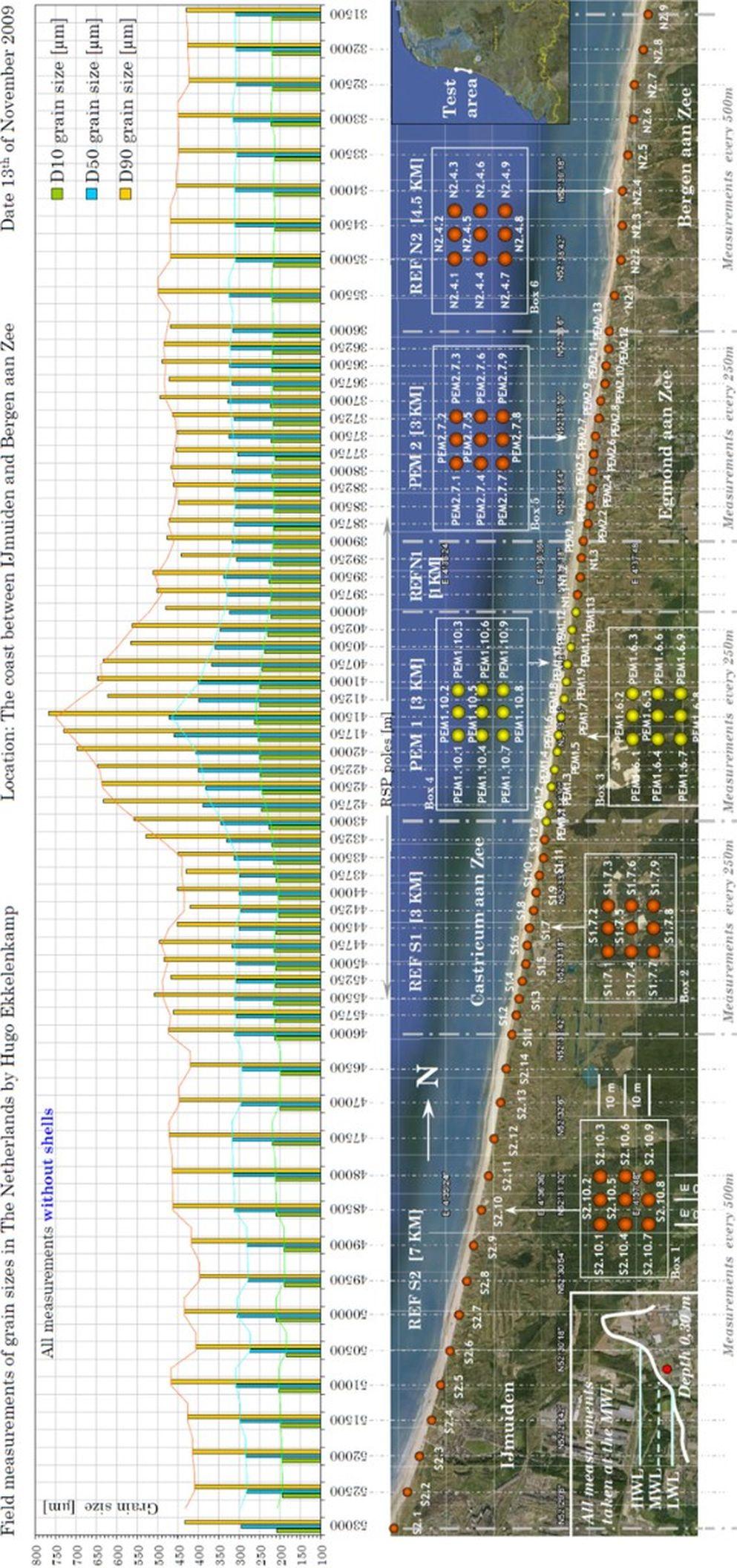Drainage Tubes versus Sediment
Effects of vertical drainage tubes on intertidal beach zone
Context
In the Netherlands almost twelve million cubic meters of sand is added to the Dutch coast every year by means of beach nourishments. A similar amount is nourished in Denmark. As people start to live near the sea, coastal protection systems become very important. The coastal area forms a safety zone against flooding. It is also a recreational area where wide beaches are desirable. In the beginning of 2006 an innovative technology already used in Denmark was applied at the coast near Egmond aan Zee. Within the intertidal beach area a number of vertical drainage tubes were placed. This passive system, consisting of an array of tubes, was placed in rows on a depth of thirty centimetres below the beach surface. This study describes possible working mechanisms of the tubes within the complex beach system. In addition, huge amounts of data are collected which tells us more about the sedimentology of the beach and soil structure. This data is used later on to study influenced beach processes and morphological changes.
Vertical drainage tubes in theory
A large-scale mechanism is formulated which consists of five possible processes that could be categorized into three groups: pressure changes, air ventilation and vertical transport of water. It all starts with the flow of water through the tubes due to a continuous variation of the sea level. A starting point or ‘trigger’ could be the measured outflow of groundwater. Water stored in the beach subsoil flows from the high water line to the low water line by a groundwater gradient. The drainage capacity of the tubes is largely determined by the outflow capacity of water. As the water chooses the path of least resistance the very permeable shell layers at Egmond aan Zee or gravel layers near Hvide Sande could increase the flow through the tubes. Levelling of the groundwater gradient increases the storage capacity of water in the beach. As the moisture level of the beach lowers, the beach becomes more dry in time. Aeolian transport increases which sorts the sediment at the beach. Fine grains are blown away along the coast and into the dunes. The beach becomes more stable.
Data collected at the Dutch and Danish beach
The field measurements for this study yielded data regarding the sedimentology, geological composition, stratification of the subsoil, bottom resistance, beach bathymetry and beach envelope. The average grain diameter along the Dutch drainage tube area is 0.1 mm larger compared to the historic analysis and the reference areas. Only the upper 1 to 2 metre of sand at the beach consists of this coarse sand of approx. 0.4 mm. The data indicates also that the sediment at the drainage tube area is more asymmetrical and irregular shaped than the sand along the reference areas. The Danish drainage tube areas contain coarse sediments as well. On average this sand is 0.3 mm coarser than that of the reference areas. So at both beaches the sediment at the drainage tube areas is relatively coarse compared to the natural variability of sediment sizes.
Effects of coarse sediment on beach processes
Due to the coarse sediment at the active surface, the beach morphology theoretically changes. The beaches could become very steep. The moisture level of the beach lowers. As a result of this aeolian transport increases which sorts sediment at the beach. Fine grains are blown away along the coast and into the dunes. The grain sizes fluctuate around the crossover point Dq0 which depends on the relation between infiltration and exfiltration. At the drainage tubes areas it is very likely that the crossover point is reached and the net transport is directed onshore. Could the drainage tubes reason for the coarse sediments found at the beaches?


